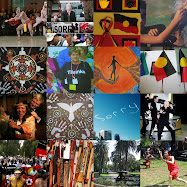

Bare Island was part of the traditional land of the Gweagal and Kameygal Aboriginal tribes. In 1770, it was described as ‘a small bare island’ by early explorer, Lieutenant James Cook.
In 1877 it was decided that a fort was to be built on the island. Botany Bay was considered the back door into Sydney, thus making the city vulnerable to a seaborne attack. Russia was perceived as the main threat. Plans for the construction of a fort were drawn up by the Colonial Architects Department and tenders in 1880. Construction was completed in 1885.
In 1890 a Royal Commission found that construction of the fort was faulty due to the use of an inferior grade of concrete. The whole project started to crumble before it was completed. The Royal Commission was very critical of the material used and were reluctant to refer to the material as concrete. The two clerks who were responsible for the operation, Henry Purkis and Edwin Colley, were found to be neglectful in their duties of inspecting the site. The contractor responsible was asked to repay some of the money that was paid out to him. He was also banned from any other government contracts. The Colonial Architect Mr James Barnet who is more widely known for designing many of the beautiful sandstone buildings in Sydney was eventually blamed for failing to oversee the project and to limit the amount of extra funds paid out to the contractor. This led to his resignation in disgrace from government office.
Though bristling with guns, the fort was soon made redundant by advancing technology. By 1902 Bare Island was decommissioned and ceased to exist as a military fortification, with only a handful of military personnel manning the fort.
In 1912, Bare Island became a retirement home for war veterans from the Crimea, Sudan and China campaigns. It continued to operate as a retirement home until 1963, after this the Randwick District Historical Society became caretakers of the island. In 1967 it was passed onto the New South Wales Parks and Wildlife Service for use as a museum and tourist attraction. The Bare Island fort has now been declared an historical site, and can be visited by way of guided tours on Sundays.
It featured in the movie Mission Impossible 2.




I haven't seen it from those angles before.
ReplyDeleteSydney - City and Suburbs
A scandal, that concrete.
ReplyDeleteSo an attack from RUSSIA was feared??
This is all so interesting.
Can't believe I lived in Randwick a whole year and never went to see Bare Island. Next time (but not at night!).
Fascinating history! The sign and the dog look positively ominous!
ReplyDeleteThat was fascinating, Sal. So much of the stuff built to defend the city during the 19th century simply was a rip off. The concept that a fort, any fort, could defend such an open area is laughable. Fear, fear, when there was nowt to be worried about. Puts me in mind of boat people.
ReplyDeleteInteresting place. Not somewhere to wander at night, though!
ReplyDeleteFollowing the Crimean War debacle, the Russian rulers did indeed revive some of their old expansionist plans (in Asia and in Eastern Europe). But the idea of Melbourne and Sydney being endangered sounds a bit far fetched. Yet Melbourne built a chain of fortresses (with canons) to protect the entrance to Port Phillip Bay and Bare Island, La Perouse was the equivalent in Sydney. How strange. How expensive!
ReplyDeleteAt least, as you noted, Bare Island became a retirement home for ex servicemen. I visit Sydney 3 times every year and would not have known this stuff.
I like old forts even the unsuitable concrete ones. Nicely captured.
ReplyDeleteWho lets the dogs out??? (at night) - pretty funny but I would not want to be caught by one. The picture of the dog on the sign looks like a shadow puppet.
Bare Island is a great place, it has rich in history and a part of the traditional land of the Gweagal and Kameygal Aboriginal tribes that so cool and nice. like some tourist spots in the Philippines | top tourist destination in the Philippines in so amazing and beautiful. thanks for sharing this...
ReplyDeleteI lived on Bare Island in 1973. My father worked for the National Parks and Wildlife service and we were given Bare Island to live on as part of his job. I was only about 7 at the time. Definitely the most unusual place I've ever lived. Very basic..to say the least!
ReplyDelete